Recent Commercial Posts
Be Ready for Anything: Business Disaster Preparedness with SERVPRO® of Hamilton & South Trenton
10/4/2023 (Permalink)
Business owners know that running a successful operation involves juggling countless responsibilities. One critical aspect often overlooked is disaster preparedness. From natural disasters to unforeseen accidents, disasters can strike at any time. That's where SERVPRO® of Hamilton & South Trenton steps in, offering expert assistance to help business owners be prepared for any disaster. In this blog post, we'll explore why disaster preparedness matters for businesses and how SERVPRO can be your partner in readiness.
1. Identify Risks:
Start by identifying potential risks specific to your business and location. Are you in a flood-prone area? Do you experience harsh winters with the risk of frozen pipes? Knowing your vulnerabilities is the first step in preparedness.
2. Develop a Plan:
Create a comprehensive disaster preparedness plan that outlines the steps to take in case of various emergencies. Your plan should include evacuation routes, emergency contact information, and a clear chain of command for decision-making.
3. Invest in Insurance:
Adequate insurance coverage is essential. Consult with your insurance provider to ensure you have the right coverage for your business. This includes policies for property damage, liability, and business interruption.
4. Backup Your Data:
In today's digital age, data loss can be catastrophic. Regularly back up your business data, both onsite and offsite. Consider cloud storage solutions for added security.
5. Partner with SERVPRO:
SERVPRO of Hamilton & South Trenton offers a variety of services tailored to meet the needs of businesses. From emergency response plans to post-disaster cleanup and restoration, SERVPRO can be your trusted partner in disaster recovery.
6. Train Your Team:
Ensure that your employees are well-versed in the disaster preparedness plan. Conduct regular drills and training sessions to familiarize your team with emergency procedures.
7. Stay Informed:
Monitor weather alerts, stay informed about local emergency resources, and maintain a list of emergency contacts. Being informed allows for quicker response in times of crisis.
8. Regular Maintenance:
Preventative maintenance can go a long way in disaster preparedness. Regularly inspect your business premises, including electrical systems, plumbing, and structural elements, to identify and address potential issues.
Disasters may be unpredictable, but your response to them doesn't have to be. Business owners who prioritize disaster preparedness are better equipped to protect their employees, assets, and investments. With the help of SERVPRO® Hamilton & South Trenton, you can take proactive steps to be ready for anything that comes your way. From planning and prevention to cleanup and restoration, SERVPRO is your trusted partner in disaster readiness and recovery. Don't wait for disaster to strike; start preparing today for a more resilient tomorrow.
Does Your Business Have a Natural Disaster Plan?
10/3/2022 (Permalink)
Would your business be prepared to face all that Mother Nature can throw at it through floods, hurricanes, tornadoes, wildfires and earthquakes? The most important key to surviving these natural disasters is to be prepared for these situations.
Being prepared for these situations involves creating a natural disaster plan for your business. This blog will lay out some aspects to consider when designing that very important disaster plan.
Where to Start With Your Disaster Plan
There are many things you will need to consider, including your employees, your material assets and equipment, when developing a disaster plan for your business.
Some of those considerations should be:
- How to protect your employees
- How to secure your assets
- How to get business up and running again
Many checklists have been made available through sources like the Red Cross, FEMA and Ready.gov that can offer information that will help you identify areas that need to be included in your natural disaster preparedness plan. These sources will also help you see just how prepared you truly are.
Don’t Neglect Employee Safety
If a disaster should strike without warning, your plan must lay out clear and concise procedures and safety measures for the protection of your employees and visitors. Your evacuation routes and exits from your facility should all be properly and clearly marked, have an area designated that will serve as a shelter space, consider emergency light installation, and ask for volunteers to serve as designated “safety wardens” properly trained and ready to guide and assist with all emergency efforts.
When choosing a place for shelter, ideally this space would be a basement or storm cellar in the event of tornadoes or other high-wind situations. If there is no basement available, select a small interior room on the lowest level of the building, such as a closet or interior hallway.
How to Protect the Assets
In a brick and mortar location, you’ll still need to make careful decisions when it comes to protecting the assets inside the building. You have thousands of dollars tied up in equipment and/or merchandise that will be at risk should a natural disaster strike.
Be sure to have a complete and up-to-date inventory of all equipment and assets. Having photographs prior to a disaster whenever possible is also always helpful if insurance claims need to be made. If your assets are computer data-based and kept on a server, take the steps necessary to ensure that the backup system is making regular backups and that the storage system cannot be damaged, such as a cloud storage option.
If you own the building that you conduct your business in, get with a contractor to uncover areas that could be structurally strengthened. This contractor should be able to suggest possible safety upgrades and advise on any areas that may not make the grade in certain weather situations.
Getting Back to Business
When—and if—a natural disaster does occur, it may be entirely possible that your business will have to be closed for days or months due to the damage incurred. And every day you remain closed is another day of lost profits. It is wise to set up a disaster fund to help cover any additional costs that are not covered by your insurance.
Keep a list of contractors handy who will make themselves available for repairs, and know which cleanup and restoration service will be available to quickly respond to your emergency situation.
With SERVPRO® of Hamilton/South Trenton, you can count on us to get to the disaster faster and make it "Like it never even happened." Our training and expertise have prepared us to help with water damage, storm damage, fire damage and mold remediation quickly and effectively.
Knowing what to do when disaster strikes your business is of the utmost importance. When it comes to the cleanup and restoration aspects, depend on us to be there for you.
Business Owners Should Practice Flood Preparedness
10/3/2022 (Permalink)
 Creating a plan for floods is very important for business openers.
Creating a plan for floods is very important for business openers.
It is not uncommon for business owners to underestimate their flood preparedness, especially if they are not in an area historically known for flooding. However, it was recently reported that natural disasters involve flooding in 90% of instances and affect areas that are not typically known for flooding quite often.
Planning is a smart idea for business owners not only to increase safety within the workplace, but it can also serve to allow businesses to reopen more quickly after the flood passes. By planning ahead, business owners can have the peace of mind to know that they are ready should a flood occur.
How to Practice Flood Preparedness
Some key ways business owners can practice flood preparedness are:
- Make use of the Flood Map provided by FEMA to get an overview of flooding rates in your geographical location.
- Copy business documents and keep them in a secure location such as a waterproof safe or safety deposit box.
- Develop an official training guide for emergencies so employees can be educated and know what to do.
- Designate evacuation routes and mark them clearly.
- Consider adding flood insurance to your business policy, which does not typically include it.
- Create a personal emergency kit for your desk and an office-wide one in case someone is stranded.
- Find creative ways to raise electronics if necessary.
How to Prepare Documents for a Flood
As you begin the process of reopening the business after a disaster, having helpful documents will make the process much easier. Consider preparing and storing copies of the following:
- The continuity plan for after floodwaters recede
- Contact information for all employees, vendors, suppliers and any other parties that might need to be contacted right away
- Your insurance policy records and agent contact information
- Digital file backups and recovery instructions
- Financial documentation that may come in handy
Business Interruption Insurance
8/1/2022 (Permalink)
It's common practice to maintain commercial property insurance policies to repair and replace your assets in the event of a covered peril. In fact, for its cost, it's extremely risky to even consider not carrying this insurance. Commercial Property Insurance can pay your repair or replacement costs if your business property gets damaged or destroyed from a fire, theft, or other covered loss.
However, when your business is impacted by an event that forces closure, the impact of lost revenue and the burden of ongoing costs can be crippling. Few consider adding Business Income (interruption) coverage.
Business Income Coverage (BI) can help with operating expenses during the restoration period until the business can resume normal operations. This coverage can include:
- Lost Net Income
- Mortgage and Lease Payments
- Employee Payroll
- Taxes
- Loan Payments
As with any coverage policy, you need to consider reasonable terms when establishing the policy. After a major disaster, it can take more time than many people realize to get “back in business.” Business income coverage likely has a "restoration period.” This is the length of time that a policy will help pay for lost income and extra expenses while the business is being restored.
So, this then begs the question of "how much BI insurance coverage is needed?" The general rule is to use gross earnings and projections to help determine future profits. This will assist in determining the right amount of coverage.
What is NOT covered by BI Insurance? Typically, the following is not covered:
- Broken items resulting from a covered event or loss (such as glass)
- Flood or earthquake damage, which is covered by a separate policy
- Undocumented income that’s not listed on your business's financial records
- Utilities
- Pandemics, viruses, or communicable diseases (such as COVID-19)
BI Insurance may also include extra expenses which will cover anything beyond the normal day-to-day expenses, while the business recovers. This includes:
- Renting a temporary place of business while the original place of business is being restored
- Replacement of hardware, technology, and furniture
- Paying overtime for employees or hiring more employees
- Leasing equipment
Speak with your Commercial Insurance Agent to discuss BI insurance and other policies which could protect the business during unplanned outages of all types.
Contact us at 609-256-8890 if you have a service need or click here to visit our website to learn more about SERVPRO of Hamilton & South Trenton's System Services.
Benefits of HVAC System Cleaning
8/1/2022 (Permalink)
 HVAC Systems need to be cleaned especially in commercial buildings.
HVAC Systems need to be cleaned especially in commercial buildings.
Our SERVPRO staff are trained to take on even the biggest tasks. SERVPRO provides cleaning services to commercial buildings no matter the size.
For those with HVAC Systems, it is very important to do routinely maintenance. This has many benefits including better air quality and less energy wasted.
HVAC systems can get dirty over time and they have the potential to contain large amounts of dust and particulates. Indoor air quality is crucial and is one of the main concerns that building managers and building inhabitants have when they decide to investigate HVAC system. Normally, commercial buildings generate a great deal of contaminants and air pollutants, such as dander, dust, and chemicals. These contaminants are pulled into the HVAC system and re-circulated 5 to 7 times per day, on average. This re-circulation can cause a build-up of contaminants in the ductwork overtime.
Although filters are used, the heating and cooling system still gets dirty through normal use. Contaminants in the heating and cooling system cause it to work harder and shorten the life of your system. When an HVAC system is clean, it doesn’t have to work as hard to maintain the temperature you desire. As a result, less energy is used, leading to improved cost-effectiveness.
Source: Nadca.com
Call us at 609-256-8890 for HVAC cleaning services.
Why Carpet Cleaning is Important in the Workplace
8/1/2022 (Permalink)
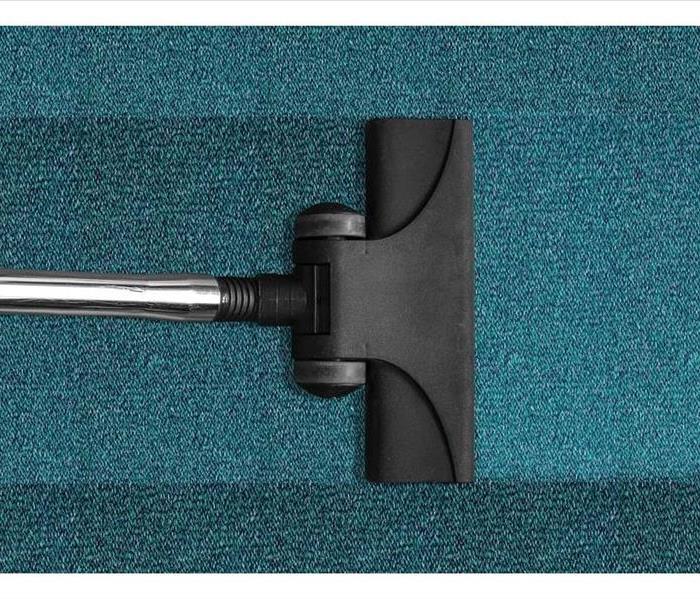 Carpet cleaning is very important in commercial buildings.
Carpet cleaning is very important in commercial buildings.
Maintenance Protects your Investment Flooring is a substantial investment —one you’ll want to protect for years to come. After all, the longer your flooring lasts, the less it costs. The initial cost for floor covering materials and installation does not fully encompass your total floor covering investment. The life cycle cost also factors in life expectancy of the carpet, costs for removal/disposal, lost revenues during renovations and maintenance costs over the life of the carpet.
Good maintenance helps protect your total flooring investment.
Maintenance helps carpet last longer and cost less proactive, regularly scheduled maintenance removes soil before it can build up and damage carpet fibers. This can actually extend the life of the carpet, reducing the costs of restoration, replacement and disposal. Reactive maintenance cannot fully restore a carpet to a like-new appearance. This results in shorter carpet life and higher carpet life cycle costs.
Maintenance Is Good for the Environment
Our life cycle analysis of carpet shows that the overall environmental footprint of carpet is reduced by increasing the amount of time a carpet remains on the floor. A consistent, proactive maintenance program can significantly improve the appearance retention throughout the life of the carpet. Less carpet waste going to landfills is always good for the environment.
Creating a Carpet Maintenance Program
Once the importance of proper carpet maintenance is understood, we can create a comprehensive maintenance program for you.
Step 1: Make preventive maintenance a priority preventing soil from entering the environment is easier and less expensive than removing it from the carpet.
Here are five simple but important steps in a preventive maintenance program:
Keep outside areas clean outside maintenance helps minimize immediate sources of soil. The cleaner you keep sidewalks, parking lots, garages and other areas around the perimeter of your building, the less dirt that will be tracked inside.
Use soil barriers walk-off mats, grates and removable elevator carpets help collect soil before it can be tracked throughout the building. Be sure soil barriers are large enough to allow for at least five steps across.
Vacuum daily, clean frequently and change often for best results. Protect desk areas chair pads under desk chairs prevent casters from crushing carpet and grinding in soil. Specify eating, drinking and smoking areas By restricting these activities to limited areas, you can help confine certain difficult kinds of soil.
Maintain your HVAC System To remove many airborne particles before they are recirculated, regularly replace or clean filters on air-handling equipment. Airborne soil includes industrial wastes, auto emissions, tobacco smoke and pollen.
Step 2: Manage Soil with regular vacuuming. Vacuuming is the most important dry soil management procedure. Effective vacuuming removes dry soil so that it cannot spread to other carpeted areas.
The level of effective vacuuming has two components: frequency and equipment type. Vacuuming Frequency:
• Heavy- to moderate-traffic areas (entrances, elevator lobbies, reception areas, busy corridors, cafeterias, vending machine areas, employee lounges) should be vacuumed daily.
• Light-traffic areas (offices, conference rooms) should be vacuumed at least two to three times per week. Equipment Type
• Dual-motor vacuums are very effective machines for thoroughly cleaning heavy- to moderate traffic areas. This vacuum uses two motors to clean. One motor drives a beater-brush bar that knocks dirt loose, while the second motor provides suction that pulls dirt into the vacuum bag.
• Single-motor vacuums can be very effective machines depending upon their design. For the most part, they should only be used in light-traffic areas. They are generally less powerful than dual-motor vacuums, but easier to maneuver around furniture.
• Detail vacuums can be used to clean around the edges of a room or in confined areas around furniture.
• Carpet sweepers may be used to remove larger particle-sized surface dirt and small litter in high-visibility areas during the business day. However, they are not an effective cleaning method and should not take the place of thorough vacuuming.
The Carpet and Rug Institute has identified vacuum cleaners that meet industry criteria for removal efficacy, particulate emission and carpet damage.
Step 3: Promptly Remove Spills and Stains Although spills are inevitable, permanent stains do not have to be. Most stains can be avoided or removed by immediate, or at least same-day, treatment. It is good practice to have spot and stain removal products and equipment on hand for immediate use.
Correct identification of spots and stains is the first step in proper removal because some types of spills may require special cleaning solutions and techniques.
But for most spills, the basic removal procedure is the same:
1. Blot as much of the spill as you can with an absorbent towel. Always work toward the center of the spill. Do not rub! If the spill is solid or semisolid, gently scrape off what you can using a dull knife.
2. Apply a general-purpose carpet spotter to the spill. This is a detergent solution that is specially made for use on carpets. Never use other kinds of cleaning solutions, such as bleach. These may permanently damage the carpet.
3. Tamp or pat in the carpet spotter with a tamping brush.
4. Wait three minutes, then blot again.
5. Rinse with clean water, then blot as dry as possible. If the stain remains, repeat the entire process. If the stain persists after the second time, contact us here at SERVPRO of Central Union County.
Step 4: Renew your carpet with proactive, periodic cleaning even the most effective, consistent vacuuming may leave some soil behind.
Periodic cleaning improves the appearance and extends the life of carpet. Periodic cleaning also removes oily, sticky soil from the carpet that attracts and holds additional soil. Depending on soiling conditions and other factors, there are a number of available cleaning methods. Your choice of method should be based on what will be the most effective and compatible with your carpet and its traffic levels.
Call us at 609-256-8890 for carpet cleaning services.
What to Expect When You are Expecting a Contractor
8/1/2022 (Permalink)
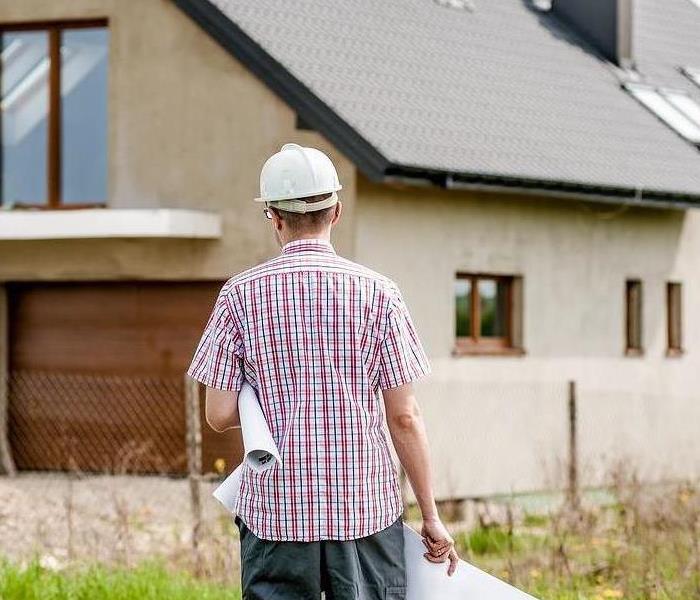 Contractors are very important for a job. Follow these tips to make it a smooth process.
Contractors are very important for a job. Follow these tips to make it a smooth process.
Looking for a commercial or residential construction company can be exhausting. You want to ensure that whoever you hire is the best company for the job at hand.
Know What You Want
As the client, you are the one driving the process. Before speaking with Contractors, spend time thinking about your goals for the project -- what it might look like, the amenities you want, and so on. If you don't know how to translate your goals into specific features or products, hire a design-build firm that can offer that service too.
Why Contractor Quotes Vary Drastically
Contractors cannot offer a correct fixed price because there are too many unknowns about the job, so try to eliminate as many of the unknowns as possible. For example, have them open up a wall to examine the skeleton of your house where the add-ons would happen.
Request to define the project specs to include only what he expects to do with the mutual understanding that if additional work is needed, you will get a change order — a written mini-bid for new work after the project has been started. This is common in the construction industry and it is the reason quotes vary by thousands of dollars. The cheapest quote also means they are not being conscientious of the realities that may come later to blow your budget when you were not prepared for unexpected expense(s).
Costs for all of the various elements of the job should include:
- Demolition and hauling trash
- Framing
- Plumbing
- Electrical work
- HVAC
- Tiling and floor covering installations
- Lighting fixtures
- Drywall and painting
- Finish carpentry
- Clean up
Contractors will often give you a fixed bid, but some work may be on a "cost plus" basis, charging you for materials, time/labor, and an administrative or overhead fee for their time managing those aspect of your project. “Cost plus” is sometimes a legitimate alternative, but it should have a cap or some provision to contain cost overruns that exceed your max budget.
Reputation Has More Value Than Price
Reputable and therefore trustworthy Contractors in trade locally for five or ten years will have an established network of subcontractors and suppliers in the area and a local reputation to uphold. That makes them a safer choice.
Ask for a business card with a real street address, not just a post office box, and get references from one or two early projects and some current customers. This will help you verify consistency and honor.
You should also vet their background by verifying their credentials and insist on a detailed contract before making a hiring decision.
Personality Is Prettier Than Price
You’re going to be spending a lot of time with this contractor, so when you make your decision, think about whether you feel comfortable with their personality, background, methods, and communication skills. Is everyone clear about the project at hand and on the same page? If not, you could end up disappointed, frustrated, and possibly out several thousand dollars beyond what you budgeted for.
Set Job Site Boundaries
Let the company know you expect routine precautions. Also, establish some ground rules about parking, bathroom use, smoking, and other issues that might concern you.
Have A Resolution Strategy
Any contractor you hire will become part of your life for at least the duration of the project. Make sure you pick someone with whom you can communicate, and trust your gut if first impressions leave you feeling uneasy. Reputable professionals will insist on clear written agreements in order to protect both parties.
During initial meetings, ask how unexpected issues or differences might be handled. This can include change orders (these should always be in writing, with cost issues directly noted) or more serious disputes, such as unintended damage or a failure to meet legal or reasonable standards.
What You Need to Know About Air Duct Cleaning
6/3/2022 (Permalink)
Air duct cleaning is a misnomer. In actuality, the entire HVAC system should be cleaned. Failure to clean all components of the system can result in recontamination of the entire system, thus minimizing the benefits of cleaning.
Just as you wouldn’t clean only half of your living room floor, you also would not want to clean only part of your HVAC system. NADCA recommends cleaning the entire HVAC system, including the following components:
- air ducts
- coils
- drain pan
- registers
- grills
- air plenum
- blower motor and assembly
- heat exchanger
- air filter
- air cleaner
There are two key components to HVAC cleaning: breaking contaminants loose, and collection of contaminants.
Breaking Contaminants Loose
Properly cleaning HVAC systems requires removing the sources of contamination. Source removal begins with the use of one or more agitation devices designed to loosen contaminants from the surfaces within the heating and air conditioning system. Examples of agitation devices include: brushes, air whips and compressed air nozzles or “skipper balls.” Agitation can also be achieved through hand-brushing or contact vacuuming.
Collection of Contaminants
During cleaning, the entire HVAC system is placed under continuous negative pressure (a vacuum) to prevent the spread of contaminants. Continuous negative pressure allows very fine particles to be removed from the system as they become airborne, ensuring that these particles are not released into the living space when the system is turned on after cleaning. This negative pressure also serves to extract the loosened contaminants, which are collected and removed from your home.
System Access
HVAC system cleaning is not a complex process, but each job is unique. Where possible, access to duct interiors should be made through existing openings such as supply diffusers, return grills, duct end caps and existing service openings. Cleaning technicians may need to cut access holes in the duct work in order to reach inside with various cleaning tools. Creation of these service openings, and their subsequent closure, requires craftsmanship and professional skills.
Equipment Requirements
There is a wide variety of equipment available to HVAC cleaning professionals. Both truck-mounted and portable vacuums can be used to stop the spread of contaminants and get the system cleaned to the NADCA Standard.
Antimicrobial Chemicals
Antimicrobial chemicals include sanitizers, disinfectants and deodorizers that can be applied to nonporous surfaces in HVAC systems to address microbial contamination and help control odors. Only chemicals registered with the United States Environmental Protection Agency (EPA) can be used. These products should only be considered after mechanical surface cleaning has been performed and if the need for such treatment has been deemed necessary. Review the NADCA White Paper on Chemical Applications in HVAC Systems for more information.
Contact us at 908-650-8611 if you have a service need or click here to visit our website to learn more about SERVPRO of Hamilton, South Trenton's System Services.
An Introduction to Mold Remediation | SERVPRO® of Hamilton, South Trenton
10/8/2021 (Permalink)
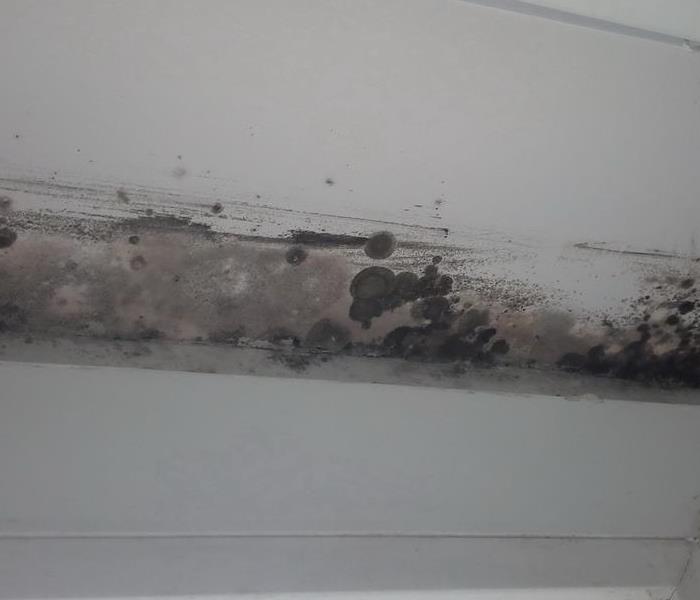 If the worst should happen and your business is damaged, know that SERVPRO® of Hamilton, South Trenton will make it "Like it never even happened."
If the worst should happen and your business is damaged, know that SERVPRO® of Hamilton, South Trenton will make it "Like it never even happened."
When there is water damage in a commercial property, mold growth will likely follow. Mold can begin to grow within 48 hours after moisture exposure.
If you are ever facing a mold issue, knowing what steps to take is very important, which is why we have chosen to use this blog to discuss the subject of mold remediation.
Mold Remediation, Not Removal
Mold remediation and mold removal ads are everywhere, and you’ve probably seen ads for these services, but the truth is there is no such thing as mold removal. Removing all mold from a home or business is simply impossible. Instead, a qualified restoration company focuses on mold remediation, which in turn brings mold levels back to a normal and natural level.
Mold spores occur naturally almost everywhere, both inside and outside. The issue arises only when a minor mold problem is left untreated and then turns into a major mold issue.
During mold remediation, the contaminated areas will be isolated by technicians. Depending on the amount of remediation required, this would be done by either closing all doors and windows or sealing off all doorways and openings with polyethylene sheeting. The technicians will use a method called “misting” to suppress the dust in the contaminated areas.
Materials that are wet and mold-damaged are removed and discarded in plastic bags. Any areas that have been exposed to and affected by the mold are then thoroughly cleaned and dried. A HEPA vacuum may be brought in at sometime during the remediation process to help remove contamination and debris.
Then, the mold-affected area is treated with a biocide and left overnight to start killing the mold spores. The following day, the mold remediation crew will return and encapsulate the affected area and beyond.
When to Contact a Professional
If you believe your business may have been affected by mold, you’ll want to act quickly. Upon evaluation of the size of the problem, and if the moldy area is more than 10 square feet, you will want call in the professionals.
The professionals you hire for mold remediation should be highly trained and certified in areas such as:
- Applied microbial remediation
- Water damage restoration
- Applied structural drying
While some minor mold issues can be successfully resolved by home and business owners on their own, it is always safest to talk to professionals and get the remediation process started quickly before further damage sets in.
At SERVPRO® of Hamilton, South Trenton our mold damage specialists are trained and certified experts in mold remediation. If your home or business is experiencing a mold issue, contact us to begin the mold remediation process.
Why Business Owners Choose Us for Restoration
10/7/2021 (Permalink)
 Our trained experts are here to help 24/7—contact us today.
Our trained experts are here to help 24/7—contact us today.
For many business owners, sustaining damage to their business can damage more than just their property—it can also damage their entire venture. In a recent FEMA study, they determined 40 to 60% of businesses will not reopen following a natural disaster. That is why if your business has sustained fire, water or mold damage, either due to a disaster or any other cause, it is important to choose a company that is well-versed in commercial restoration.
We know how important your business is to your livelihood, which is why we make it our mission to be experts in commercial restoration. Having a team you trust on your side will help you focus on other crucial business aspects and help get your doors open again faster. These are just a few of the reasons why business owners have chosen us for commercial restoration:
1. We’re Proud of Our Response Time
You may be aware that our slogan is “faster to any size disaster,” but that’s more than just something we say. Our emergency line is open 24⁄7, 365 days a year to ensure our restoration experts are alerted right away when a business owner calls to report the damage.
A quick response time not only gives business owners peace of mind, but it also makes the restoration process more efficient. By getting to the scene quickly, our technicians can stop further damage from occurring, saving both time and money on the project. This makes for one less thing business owners have to worry about as they get their business on track to reopen.
2. We’re Proud of Our Technicians
Our technicians are leaders in the restoration field because of the education and training they receive. They study the guidelines set forth by the Institute of Inspection, Cleaning and Restoration Certification (IICRC) to learn about best practices, restoration techniques and other insider tips in the field.
Technicians also have the opportunity to further their education through certification programs, online courses and other industry knowledge throughout their employment. This allows them to be prepared for any damage scenario your business might face.
3. We’re Proud of Our Equipment
The materials and procedures we use on commercial restoration projects comply with the IICRC’s guidelines, ensuring we are tackling the job with the most advanced tools in the industry.
From water extraction machines following flooding or odor removal equipment to remove smoke after a fire, we’ve got the tools to make your commercial remediation a success.
If you’re in need of commercial restoration, do not hesitate to make the call so you can get your business back faster. Our trained experts are here to help 24/7—contact us today.
Commercial Clean-ups| SERVPRO® of Hamilton & South Trenton
8/18/2021 (Permalink)
 Call us to make it, "Like it never even happened."
Call us to make it, "Like it never even happened."
Commercial cleaning and restoration present unique challenges. Our goal is to provide excellent results while minimizing the disruption to your clients. SERVPRO of Hamilton & South Trenton are fully equipped to take on your commercial property no matter the size of the job.
Commercial Services:
- Air Ducts / HVAC
- General & Specialty Cleaning
- Post Construction Cleaning
- Punch List Services
- Dry Ice Blasting
- Power Washing
- Biohazard & Sewage
- Odor Removal / Deodorization
We offer our services to any time of commercial property:
- Small/Large Office Buildings
- High-Rise Office Buildings
- Apartment Buildings
- Restaurants
- Hotel/Motels
- Small Retail Stores
- Large Retail/Big-Box Stores
- High-Rise Residential
- Manufacturing & Industrial
- Government/Military
For any additional information, please feel free to contact our office for all of your commercial property needs.
Make Sure Your Business Is Ready for Potential Disasters | SERVPRO® of Hamilton, South Trenton
8/2/2021 (Permalink)
 If the worst should happen and your business is damaged, know that SERVPRO® of Hamilton, South Trenton will make it "Like it never even happened."
If the worst should happen and your business is damaged, know that SERVPRO® of Hamilton, South Trenton will make it "Like it never even happened."
When you are a business owner, one of the most important factors to think about is emergency preparedness.
Disaster are going to happen, and while having a plan in place cannot stop all disasters, it can still offer a certain sense of security and at least ensure that your employees are aware of what to do if a disaster or emergency situation should occur.
What’s Your Plan?
Please take the time and make it a priority to sit down and work out an emergency preparedness plan for various disaster situations that could affect your business!
There are numerous emergencies your business should have a preparedness plan in place for, including:
- Fire
- Severe weather, including thunderstorms and winter storms
- Other natural hazards like floods, hurricanes, tornadoes and earthquakes
- Human-caused hazards, including accidents or acts of violence
- Technology-related issues like power outages and equipment failure
When disaster strikes, it doesn’t matter if it’s a man-made incident or natural, if no emergency plan is in place for your business, things could get even more stressful quickly.
You should make sure that safety training and familiarization of emergency preparedness plans are included in the company onboarding process, team-building activities and continuing education opportunities. By encouraging your employees to familiarize themselves with proper safety protocol and emergency procedures, you’re not only giving them the tools to protect themselves, but you are also setting them up to help protect guests/visitors and the business itself.
Where to Begin
In beginning to set up an emergency plan for your business, start by evaluating which scenarios are most likely to occur—and go as far as considering the longshots that could still happen. After all, it’s better to prepare for all the worst-case scenarios and not be caught off guard.
There are plenty of online resources to help guide you through this process, including Ready.gov, the American Red Cross, FEMA and the CDC.
If you have a business impact analysis (BIA) done, it will help predict potential effects a disaster may have on your business. This would include lost or delayed sales and income, increased expenses from repairs, and delayed implementation of business plans. Don’t forget to make sure a crisis communications plan is in place, too.
Once you have come up with an emergency preparedness plan, be sure to review it and practice it with employees. Reviewing and rehearsing various scenarios can help ensure the process remains fresh in their minds and can help employees feel more empowered.
Disaster can strike when you least expect it, but by being prepared and having a plan in place, your business will be better suited to handle whatever Mother Nature has in store. If the worst should happen and your business is damaged, know that SERVPRO® of Hamilton, South Trenton is here to help make it “Like it never even happened.”
Does Your Business Have a Natural Disaster Plan? | SERVPRO® of Hamilton, South Trenton
8/2/2021 (Permalink)
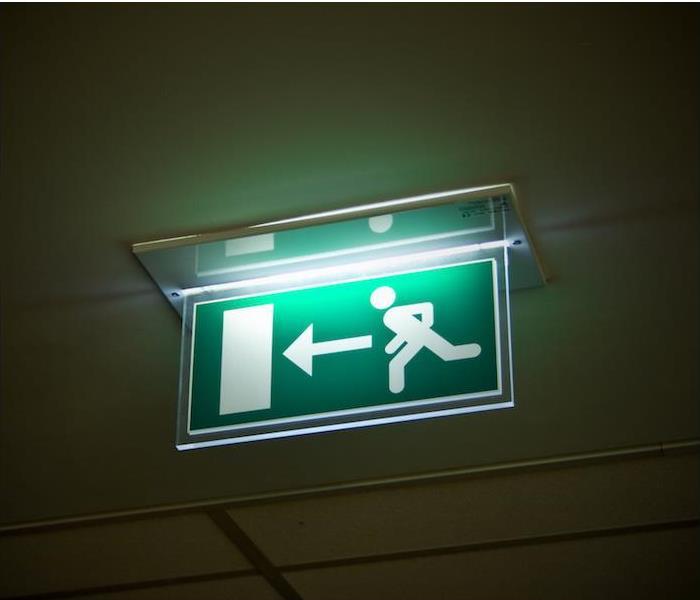 When it comes to the cleanup and restoration aspects, depend on SERVPRO® of Hamilton, South Trenton to be there for you.
When it comes to the cleanup and restoration aspects, depend on SERVPRO® of Hamilton, South Trenton to be there for you.
Would your business be prepared to face all that Mother Nature can throw at it through floods, hurricanes, tornadoes, wildfires and earthquakes? The most important key to surviving these natural disasters is to be prepared for these situations.
Being prepared for these situations involves creating a natural disaster plan for your business. This blog will lay out some aspects to consider when designing that very important disaster plan.
Where to Start With Your Disaster Plan
There are many things you will need to consider, including your employees, your material assets and equipment, when developing a disaster plan for your business.
Some of those considerations should be:
- How to protect your employees
- How to secure your assets
- How to get business up and running again
Many checklists have been made available through sources like the Red Cross, FEMA and Ready.gov that can offer information that will help you identify areas that need to be included in your natural disaster preparedness plan. These sources will also help you see just how prepared you truly are.
Don’t Neglect Employee Safety
If a disaster should strike without warning, your plan must lay out clear and concise procedures and safety measures for the protection of your employees and visitors. Your evacuation routes and exits from your facility should all be properly and clearly marked, have an area designated that will serve as a shelter space, consider emergency light installation, and ask for volunteers to serve as designated “safety wardens” properly trained and ready to guide and assist with all emergency efforts.
When choosing a place for shelter, ideally this space would be a basement or storm cellar in the event of tornadoes or other high-wind situations. If there is no basement available, select a small interior room on the lowest level of the building, such as a closet or interior hallway.
How to Protect the Assets
In a brick and mortar location, you’ll still need to make careful decisions when it comes to protecting the assets inside the building. You have thousands of dollars tied up in equipment and/or merchandise that will be at risk should a natural disaster strike.
Be sure to have a complete and up-to-date inventory of all equipment and assets. Having photographs prior to a disaster whenever possible is also always helpful if insurance claims need to be made. If your assets are computer data-based and kept on a server, take the steps necessary to ensure that the backup system is making regular backups and that the storage system cannot be damaged, such as a cloud storage option.
If you own the building that you conduct your business in, get with a contractor to uncover areas that could be structurally strengthened. This contractor should be able to suggest possible safety upgrades and advise on any areas that may not make the grade in certain weather situations.
Getting Back to Business
When—and if—a natural disaster does occur, it may be entirely possible that your business will have to be closed for days or months due to the damage incurred. And every day you remain closed is another day of lost profits. It is wise to set up a disaster fund to help cover any additional costs that are not covered by your insurance.
Keep a list of contractors handy who will make themselves available for repairs, and know which cleanup and restoration service will be available to quickly respond to your emergency situation.
With SERVPRO® of Central Union County, you can count on us to get to the disaster faster and make it "Like it never even happened." Our training and expertise have prepared us to help with water damage, storm damage, fire damage and mold remediation quickly and effectively.
Knowing what to do when disaster strikes your business is of the utmost importance. When it comes to the cleanup and restoration aspects, depend on SERVPRO® of Hamilton, South Trenton to be there for you.
Business Owners Should Practice Flood Preparedness | SERVPRO of Hamilton, South Trenton
8/2/2021 (Permalink)
 If your business has experienced a flood, we are always here to help. Call us 24/7 to get our team of professionals to your business quickly.
If your business has experienced a flood, we are always here to help. Call us 24/7 to get our team of professionals to your business quickly.
It is not uncommon for business owners to underestimate their flood preparedness, especially if they are not in an area historically known for flooding. However, it was recently reported that natural disasters involve flooding in 90% of instances and affect areas that are not typically known for flooding quite often.
Planning is a smart idea for business owners not only to increase safety within the workplace, but it can also serve to allow businesses to reopen more quickly after the flood passes. By planning ahead, business owners can have the peace of mind to know that they are ready should a flood occur.
How to Practice Flood Preparedness
Some key ways business owners can practice flood preparedness are:
- Make use of the Flood Map provided by FEMA to get an overview of flooding rates in your geographical location.
- Copy business documents and keep them in a secure location such as a waterproof safe or safety deposit box.
- Develop an official training guide for emergencies so employees can be educated and know what to do.
- Designate evacuation routes and mark them clearly.
- Consider adding flood insurance to your business policy, which does not typically include it.
- Create a personal emergency kit for your desk and an office-wide one in case someone is stranded.
- Find creative ways to raise electronics if necessary.
How to Prepare Documents for a Flood
As you begin the process of reopening the business after a disaster, having helpful documents will make the process much easier. Consider preparing and storing copies of the following:
- The continuity plan for after floodwaters recede
- Contact information for all employees, vendors, suppliers and any other parties that might need to be contacted right away
- Your insurance policy records and agent contact information
- Digital file backups and recovery instructions
- Financial documentation that may come in handy
Does Your Business Have a Natural Disaster Plan? | SERVPRO® of Hamilton/South Trenton
6/3/2021 (Permalink)
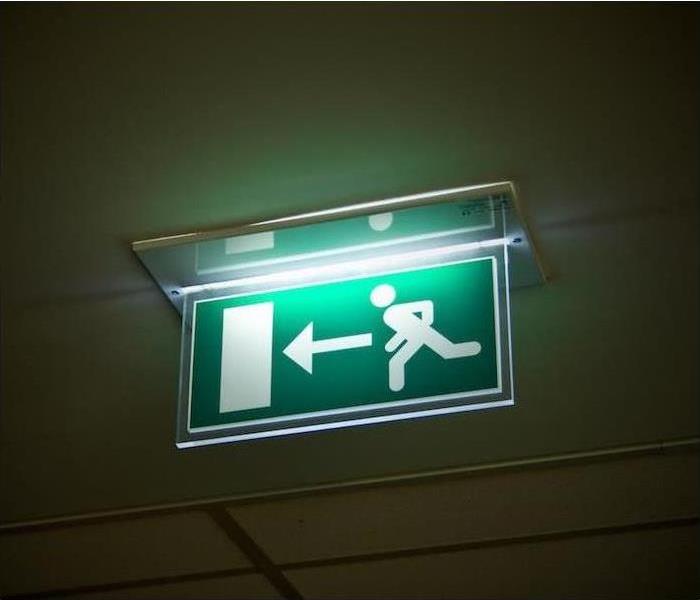 A quick response from SERVPRO of Hamilton/South Trenton ensures your Damage Restoration needs are professionally completed.
A quick response from SERVPRO of Hamilton/South Trenton ensures your Damage Restoration needs are professionally completed.
Would your business be prepared to face all that Mother Nature can throw at it through floods, hurricanes, tornadoes, wildfires and earthquakes? The most important key to surviving these natural disasters is to be prepared for these situations.
Being prepared for these situations involves creating a natural disaster plan for your business. This blog will lay out some aspects to consider when designing that very important disaster plan.
Where to Start With Your Disaster Plan
There are many things you will need to consider, including your employees, your material assets and equipment, when developing a disaster plan for your business.
Some of those considerations should be:
- How to protect your employees
- How to secure your assets
- How to get business up and running again
Many checklists have been made available through sources like the Red Cross, FEMA and Ready.gov that can offer information that will help you identify areas that need to be included in your natural disaster preparedness plan. These sources will also help you see just how prepared you truly are.
Don’t Neglect Employee Safety
If a disaster should strike without warning, your plan must lay out clear and concise procedures and safety measures for the protection of your employees and visitors. Your evacuation routes and exits from your facility should all be properly and clearly marked, have an area designated that will serve as a shelter space, consider emergency light installation, and ask for volunteers to serve as designated “safety wardens” properly trained and ready to guide and assist with all emergency efforts.
When choosing a place for shelter, ideally this space would be a basement or storm cellar in the event of tornadoes or other high-wind situations. If there is no basement available, select a small interior room on the lowest level of the building, such as a closet or interior hallway.
How to Protect the Assets
In a brick and mortar location, you’ll still need to make careful decisions when it comes to protecting the assets inside the building. You have thousands of dollars tied up in equipment and/or merchandise that will be at risk should a natural disaster strike.
Be sure to have a complete and up-to-date inventory of all equipment and assets. Having photographs prior to a disaster whenever possible is also always helpful if insurance claims need to be made. If your assets are computer data-based and kept on a server, take the steps necessary to ensure that the backup system is making regular backups and that the storage system cannot be damaged, such as a cloud storage option.
If you own the building that you conduct your business in, get with a contractor to uncover areas that could be structurally strengthened. This contractor should be able to suggest possible safety upgrades and advise on any areas that may not make the grade in certain weather situations.
Getting Back to Business
When—and if—a natural disaster does occur, it may be entirely possible that your business will have to be closed for days or months due to the damage incurred. And every day you remain closed is another day of lost profits. It is wise to set up a disaster fund to help cover any additional costs that are not covered by your insurance.
Keep a list of contractors handy who will make themselves available for repairs, and know which cleanup and restoration service will be available to quickly respond to your emergency situation.
With SERVPRO® of Hamilton/South Trenton, you can count on us to get to the disaster faster and make it "Like it never even happened." Our training and expertise have prepared us to help with water damage, storm damage, fire damage and mold remediation quickly and effectively.
Knowing what to do when disaster strikes your business is of the utmost importance. When it comes to the cleanup and restoration aspects, depend on us to be there for you.






 24/7 Emergency Service
24/7 Emergency Service









